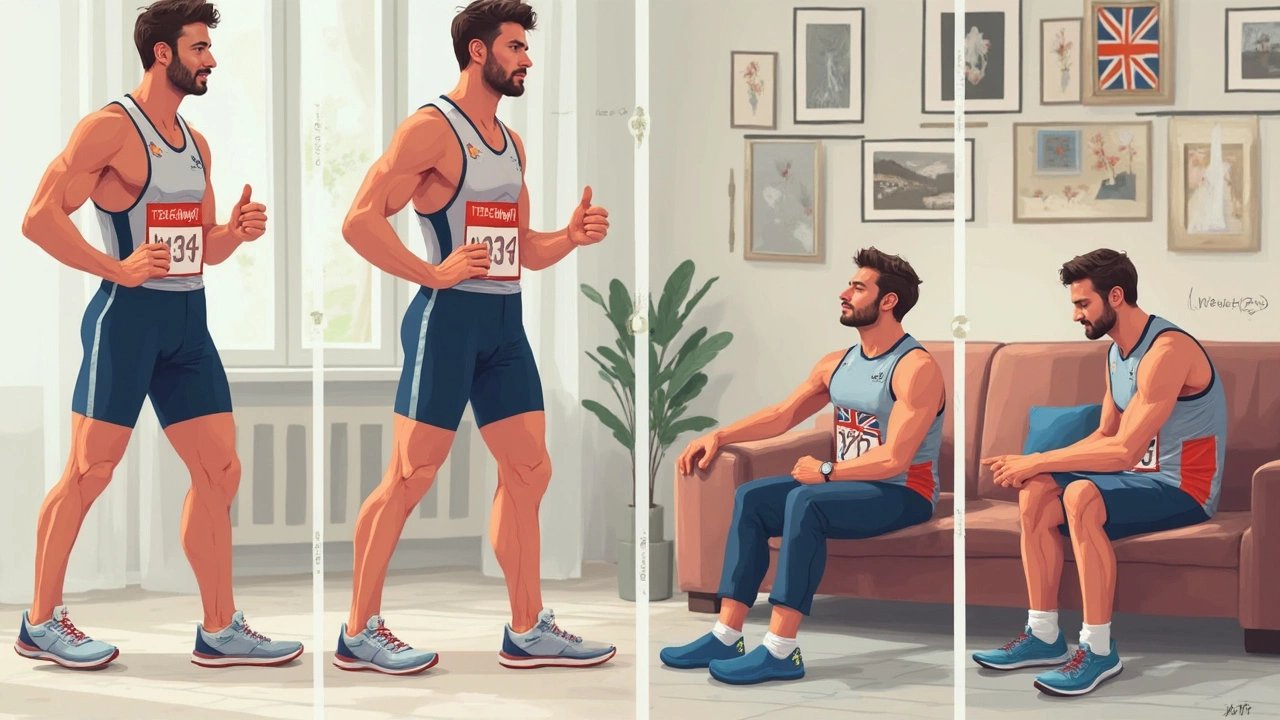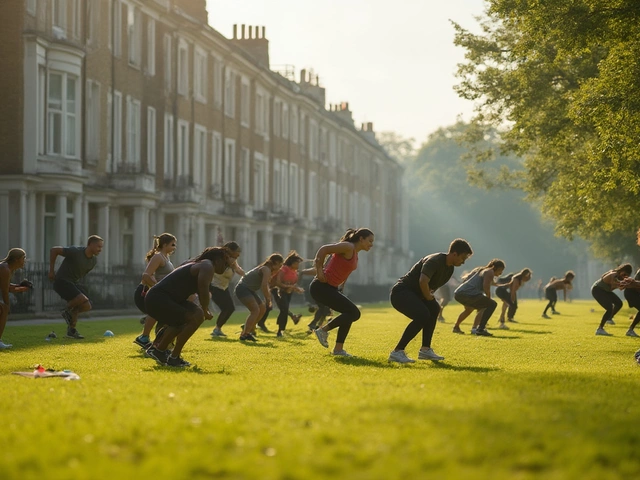Your legs cross the finish, you collect the medal, and then comes the big question: how fast will the fitness you worked so hard to build start slipping away? You’re not alone—almost everyone wonders how long those marathon gains actually last.
Most runners are shocked by how quickly things change after the big race. Fitness loss, or detraining, kicks in faster than you might expect. A few skipped workouts? Not a big deal. But take a week or two completely off, and you’ll feel it—especially in your endurance and that easy pace you fought to achieve.
The good news: you don’t just “lose everything” overnight after a marathon. But your aerobic capacity, muscle strength, and running sharpness do start to dip if you stop moving entirely. Knowing what to expect can help you plan smarter and keep that post-race high alive longer.
- What Happens to Your Fitness After a Marathon?
- Why Fitness Loss Happens (and How Fast It Hits You)
- Real-World Timelines: How Quickly Do Runners Lose Fitness?
- How to Hold Onto Your Fitness Post-Marathon
What Happens to Your Fitness After a Marathon?
Crossing the finish line at a marathon is a huge achievement, but your body doesn’t just go back to normal overnight. Right after the race, your muscles are beat up, your immune system might be down a notch, and you’re running low on glycogen—the stuff your body uses for energy during long runs. That’s why things like walking down stairs can feel harder than the last mile of the marathon itself.
Now, if you totally stop running after race day, your body starts to lose some of those fitness gains. Scientists call this detraining. Here’s what actually happens in the days and weeks after a marathon:
- First 7 days: Most runners need a week or so for full muscle recovery. You’ll notice lower muscle soreness by day four or five, but your cardio engine is still in good shape.
- After 2 weeks off:
- Your body drops about 7–10% of its aerobic fitness if you do absolutely nothing. This hit comes mostly from a drop in VO2 max, which is a measure of how much oxygen your body can use.
- By week 3 and 4:
- Things slip further. Studies say up to 20% of endurance can fade by the end of a month without running.
- Your blood volume also goes down, meaning your heart and lungs have to work harder than before.
Here’s a quick look at what might happen week by week, based on research with marathon runners:
| Time After Marathon | What Changes Most | How You Might Feel |
|---|---|---|
| Day 1–7 | Muscle fatigue, soreness | Tired legs, low motivation |
| Week 2 | Drop in VO2 max | Pace feels a bit tougher |
| Week 3–4 | Endurance & blood volume drop | Shorter runs feel hard |
Don’t panic, though. If you stay even lightly active—say, with easy walks, cycling, or swimming—you can slow this loss down a lot. Active recovery helps you bounce back faster and hold onto much of your hard-earned marathon training fitness.
Why Fitness Loss Happens (and How Fast It Hits You)
Your body adapts to whatever you do most. That means if you’re running often, your heart, muscles, and lungs get really good at the job. But take a break after a marathon and the body shifts gears almost right away. This is called detraining, and it’s mostly about how your body wants to save energy if you’re not demanding as much from it.
The biggest dip comes in your aerobic fitness—in other words, how well your heart and lungs deliver oxygen to your muscles. Studies show that within just seven to fourteen days of total rest, your VO2 max (that’s the measure of your fitness engine) can drop by up to 10%. That may not sound like much, but you’ll feel it when you try to crank out your usual pace and find your legs or lungs struggling sooner than expected.
Muscle power and strength stick around a bit longer, but they’re not immune either. After two to three weeks of zero activity, your muscles get less efficient at using oxygen, and your legs can feel heavier or sluggish during runs. Capillaries in your muscles—the tiny blood vessels that grew with training—can actually shrink if you go too long without using them. The drop-off is faster if you stop moving entirely versus just scaling back.
Here’s the rough timeline most runners can expect:
- Within 1 week: A little drop in fitness. You might feel extra sore if you jump right back into a run, but your marathon shape is mostly still there.
- Week 2: Endurance starts to fade. Easy paces feel harder than before. The first real hits to your aerobic base show up.
- After 3-4 weeks: Not only endurance but also some strength and coordination start to disappear. Those hills and intervals you crushed in training start feeling a lot tougher.
It’s not just about missing long runs, either. Your body loses fitness quicker if you go completely sedentary versus doing gentle activity like walking or cycling. So the more active you stay—without going all-out—the less you’ll notice the slide.

Real-World Timelines: How Quickly Do Runners Lose Fitness?
Alright, let’s talk numbers. Runners love data, so here it is: you can expect to hold onto most of your marathon training gains for about a week after your race, even if you do nothing. But give it two weeks off, and you'll feel those legs getting a bit sluggish as endurance starts to slide.
Scientific studies have shown your aerobic fitness (the thing that lets you go for hours) can start dropping after just 7 to 14 days of total rest. The biggest dip hits your VO2 max—a measure of how much oxygen you can use during hard exercise. After two to three weeks off, it can drop by anywhere from 4% to 10%. For runners, that could mean the pace that once felt like an easy jog suddenly feels like a slog.
Here’s an easy way to picture what usually happens:
| Time Off | What Happens |
|---|---|
| 1-3 days | Zero fitness loss, just recovery happening |
| 4-7 days | Still holding steady, maybe feeling sharper if you’re resting up |
| 8-14 days | Aerobic fitness starts to dip, running feels a bit tougher |
| 15-21 days | Noticeable loss in endurance and speed, VO2 max drops up to 10% |
| 4+ weeks | Significant loss; you’ll need to rebuild both stamina and muscle |
If you’re still moving—even if it’s just some easy walking, swimming, or cycling—your fitness won’t tank nearly as fast. You’ll likely hold onto core endurance much longer if you stay active, even with short or gentle sessions. It’s when you hit the couch and forget about movement that the real drop-off happens.
Also, the fitter you are, the quicker you’ll notice the slip. Fast marathoners see losses earlier than casual joggers, simply because their bodies are so finely tuned. Some running coaches call this the “use it or lose it” sweet spot: just a bit of regular work helps hold the line on fitness, but full-on slacking makes it harder to snap back.
So, if you’re itching to maintain what you built, sprinkle in a couple of short runs or cross-training days during recovery. Something is always better than nothing—your post-marathon body will thank you.
How to Hold Onto Your Fitness Post-Marathon
So you want to avoid starting from scratch after your marathon? Smart move. It’s totally normal to feel wiped out and not want to look at your running shoes, but hanging onto that marathon training fitness means you need the right mix of rest and movement in the weeks that follow.
For starters, experts suggest a bit of downtime—a few days to a week—just to let your body heal up. But after that, easing back into short, easy workouts actually helps your recovery and keeps your fitness from fading as quickly.
- Move, but make it easy: Try short walks, gentle cycling, or pool workouts. No need for sprints or long runs yet—just get the blood flowing and keep your muscles alert.
- Switch things up: A lot of runners get bored post-marathon. Mixing in yoga, hiking, or a fun fitness class can keep things interesting while still maintaining some endurance.
- Build back gradually: After ten days to two weeks, return to light jogs and increase your mileage slowly—no more than 10% per week. For most folks, it takes another 2-3 weeks before hard sessions or fast intervals make sense again.
- Don’t ignore strength work: Light bodyweight or resistance training is a great way to hang on to muscle and avoid those post-race aches once you get back to running more.
A lot of runners think that losing fitness is just about not running, but dropping intensity and skipping strength work accelerates the process. Here’s a quick glimpse at how activity levels and fitness loss stack up:
| Days Completely Off | Cardio Fitness Lost (%) |
|---|---|
| 3 | Little to none |
| 7 | Up to 5% |
| 14 | 10–15% |
| 28+ | 20% or more |
Stay moderately active, even if it's not running, and you'll hang on to most of your hard-earned gains. This approach also makes getting back into regular training much less painful, both physically and mentally.








